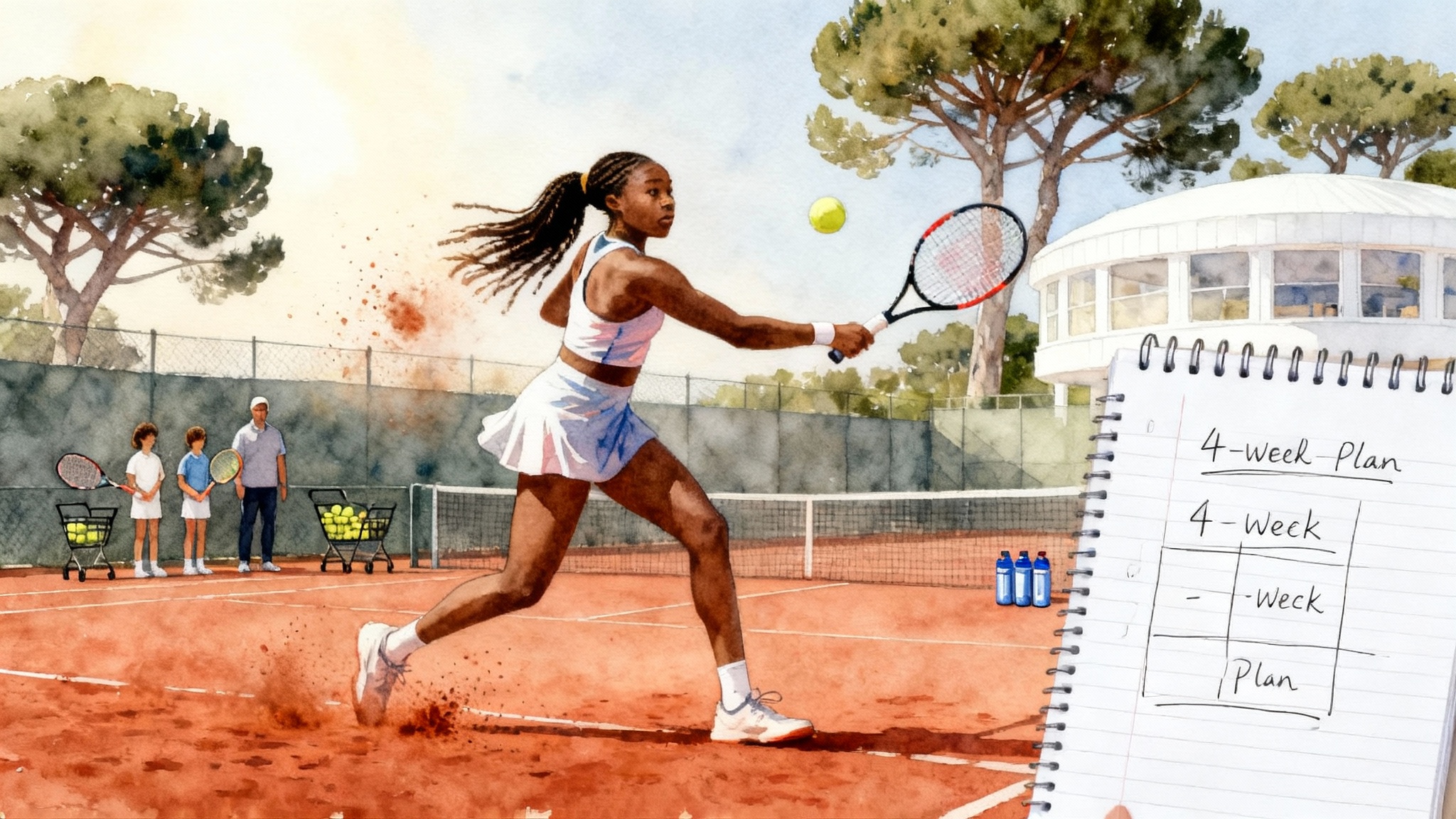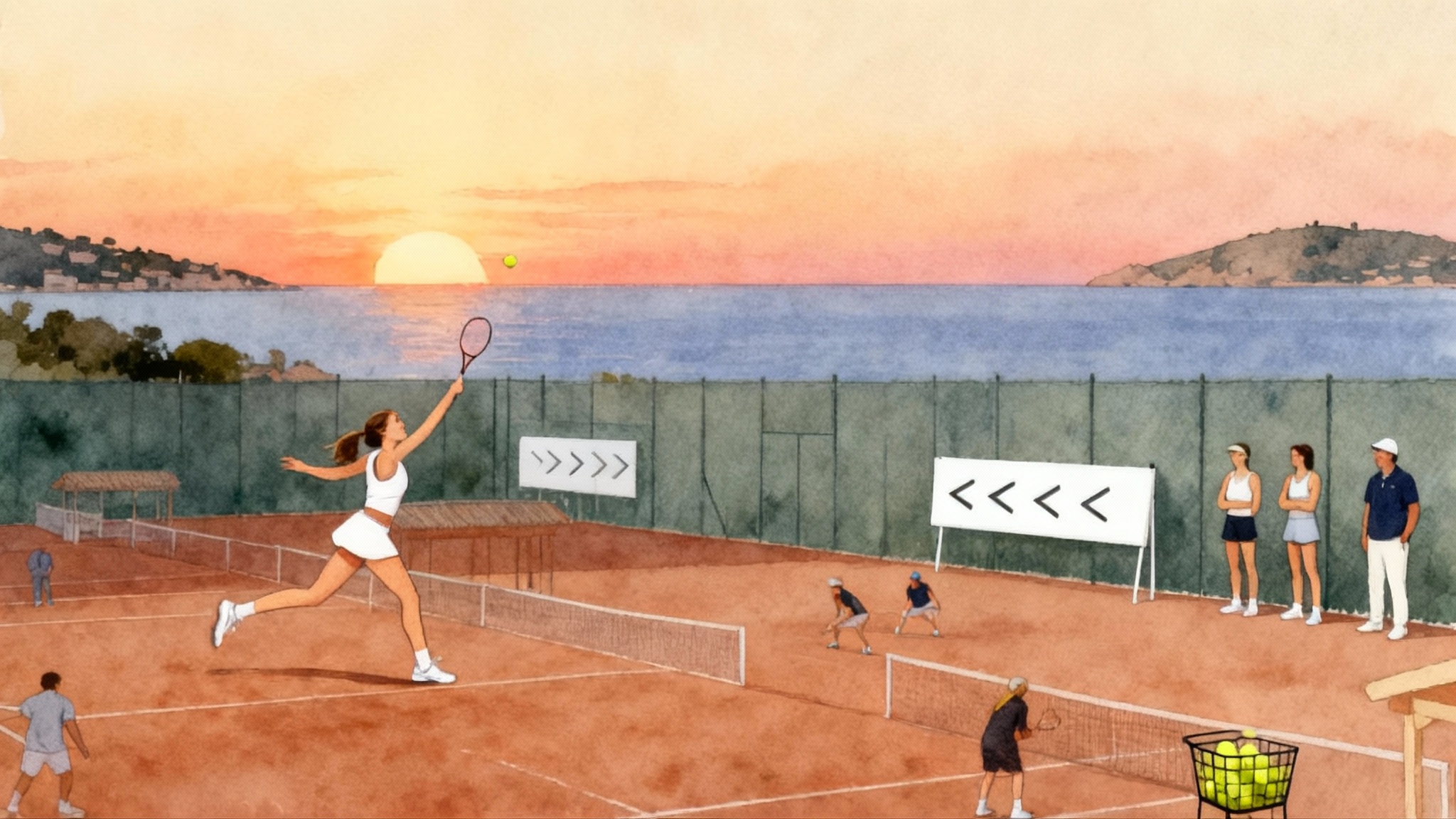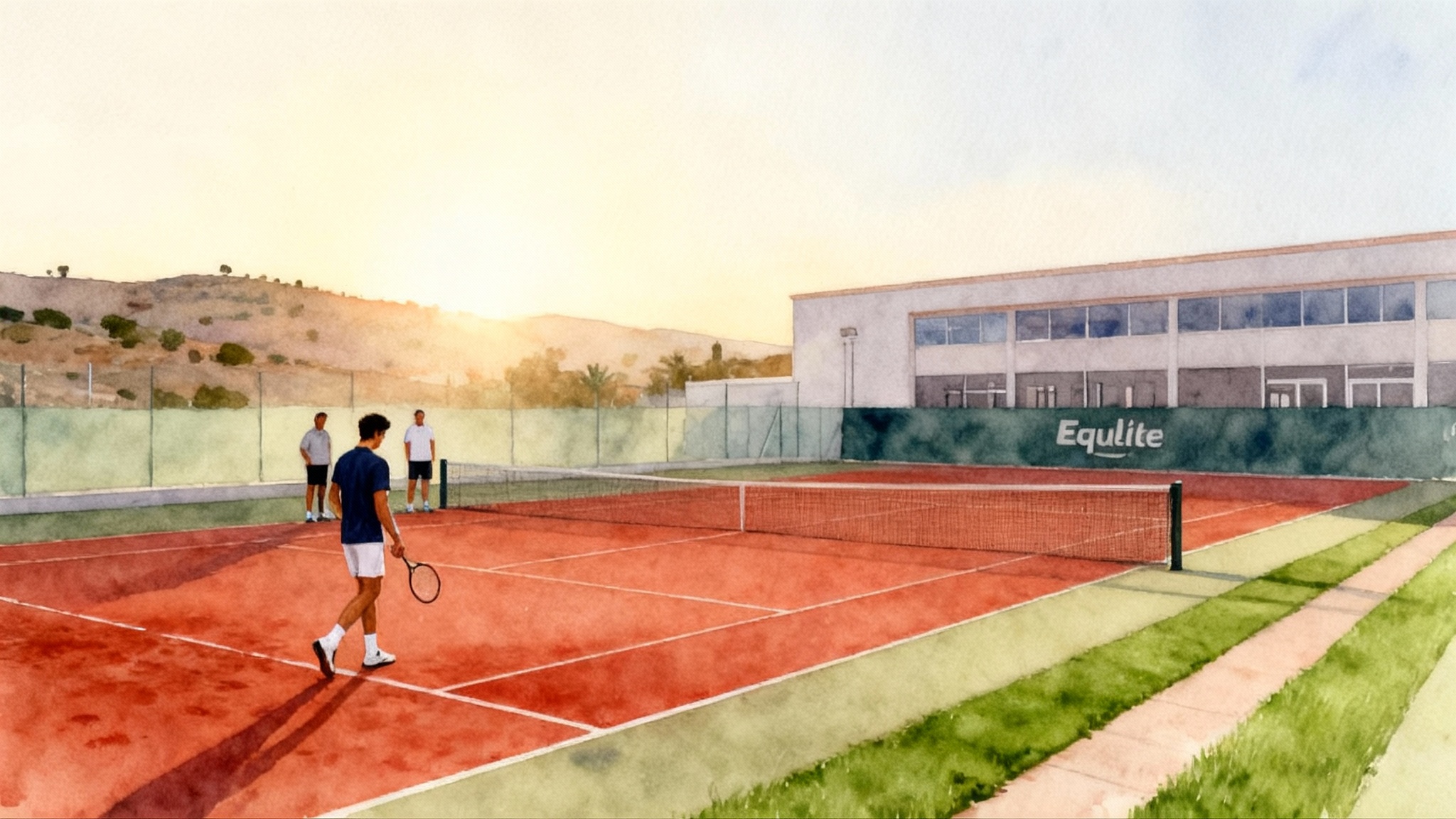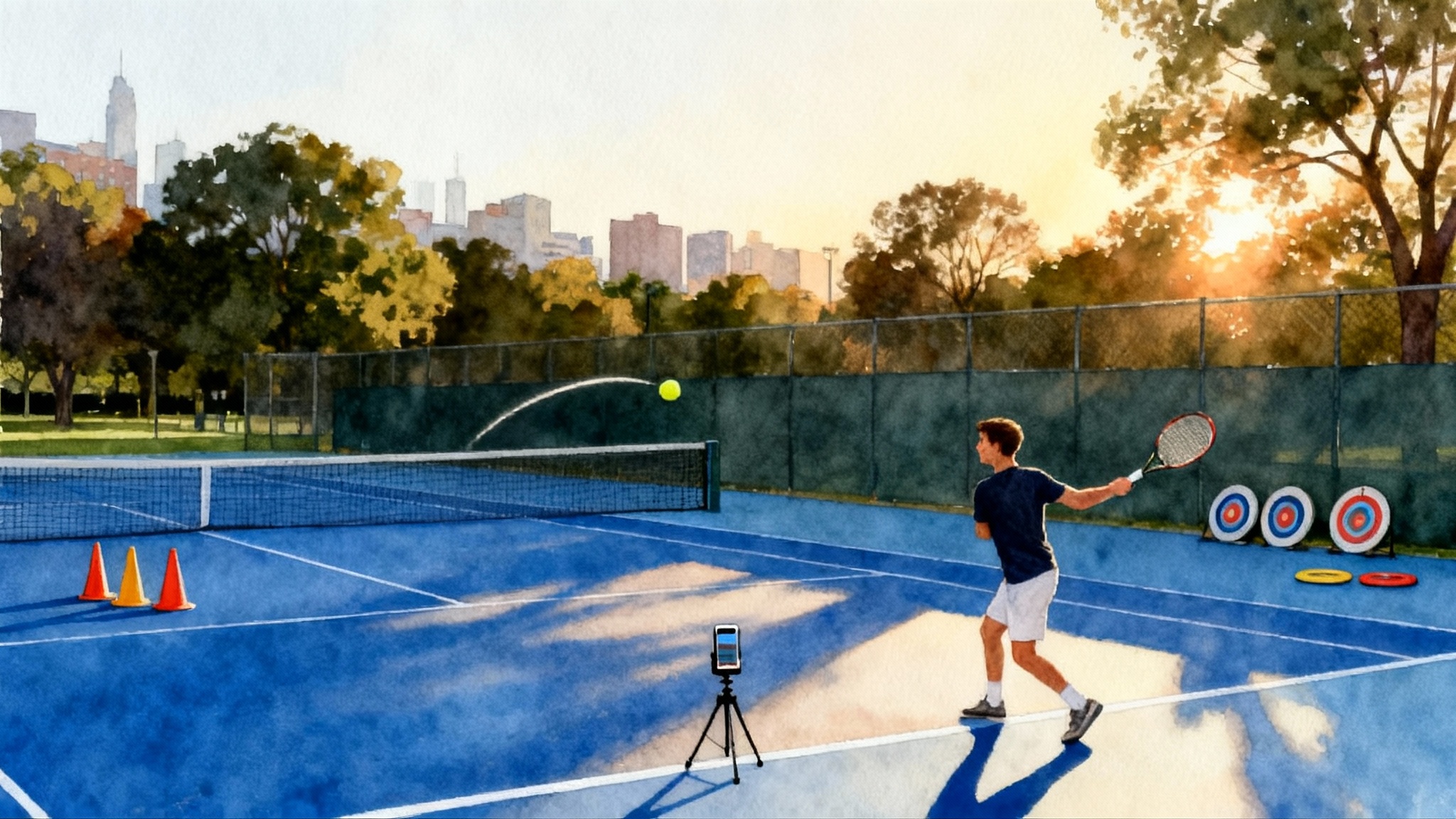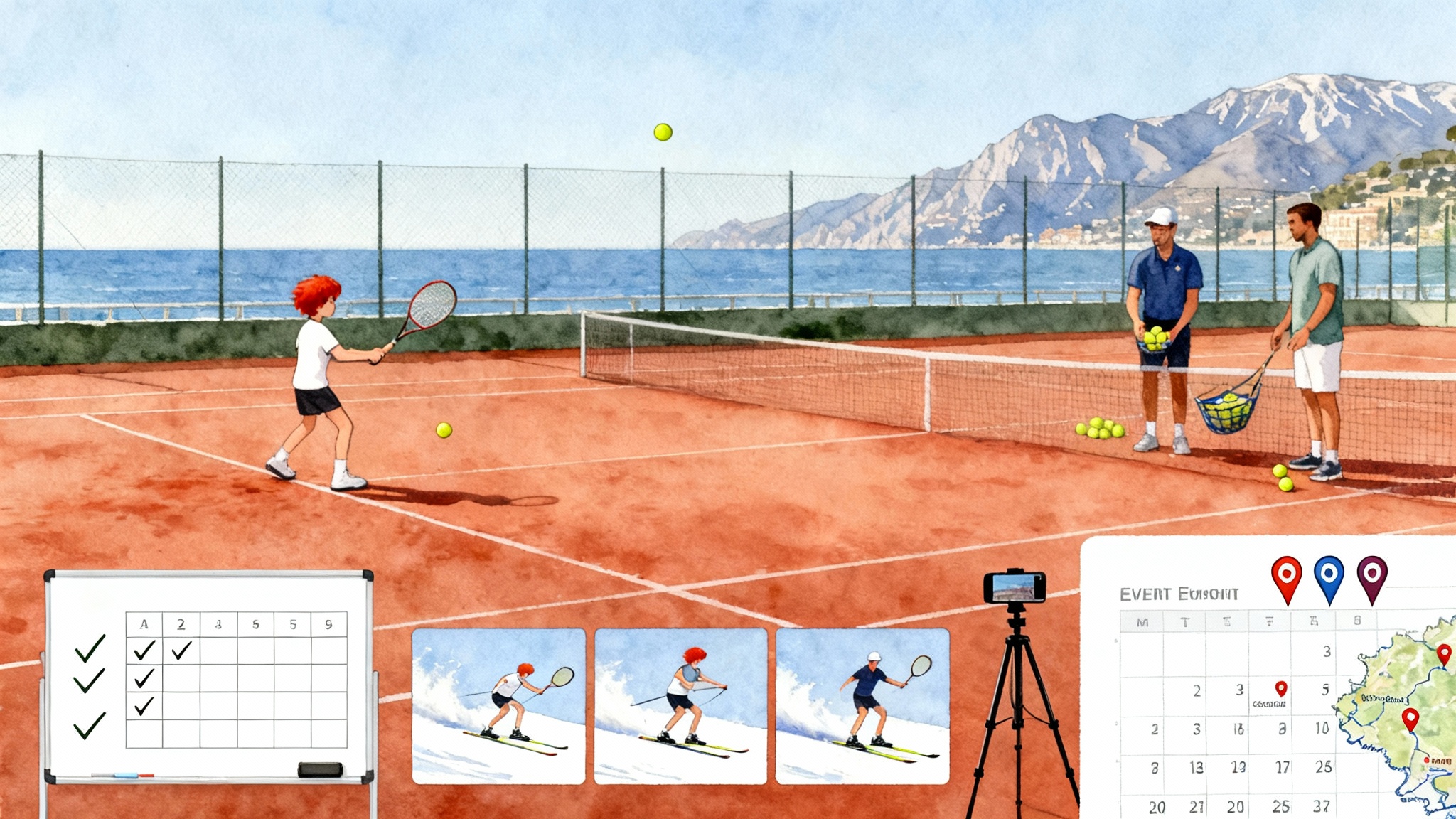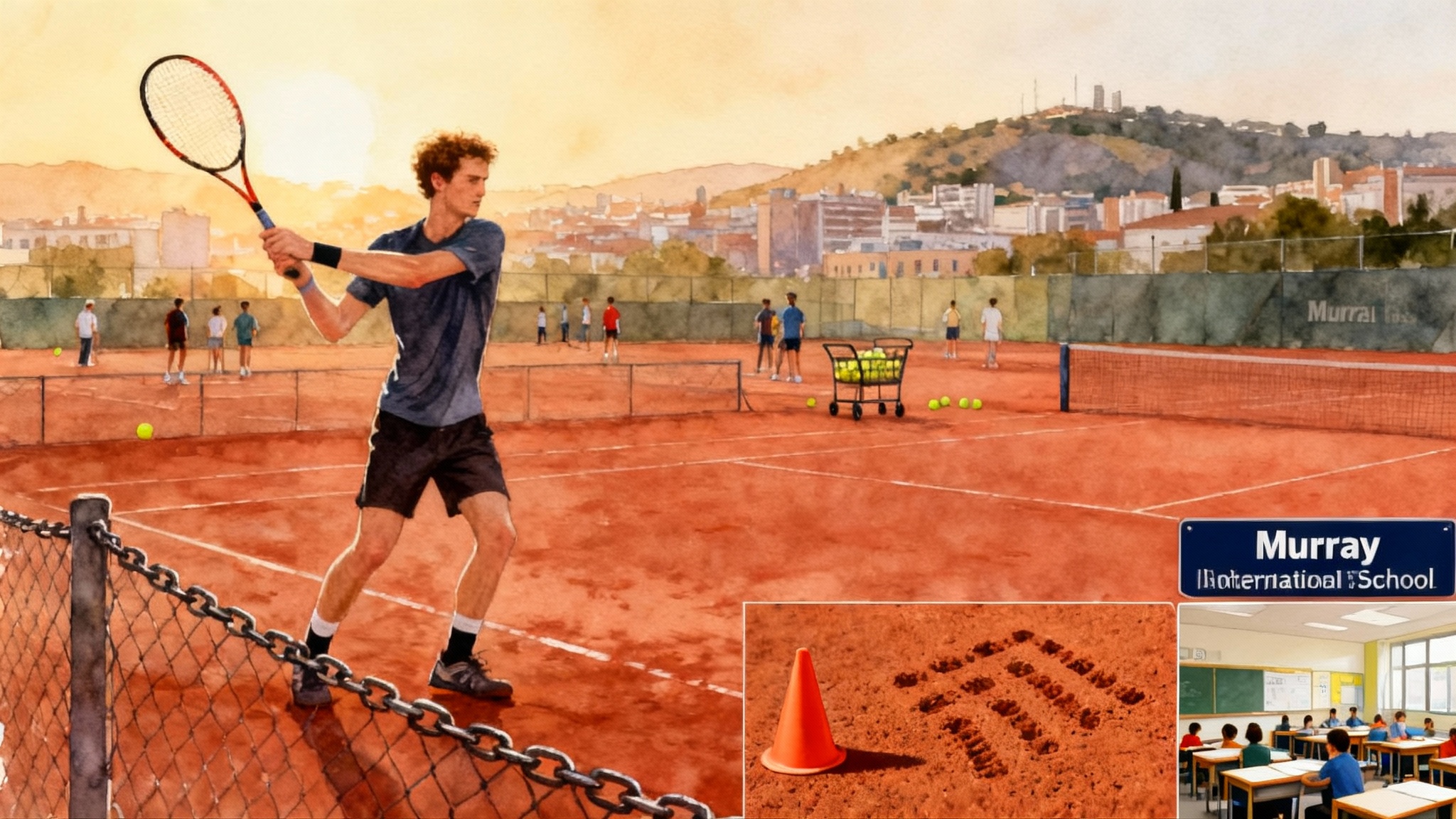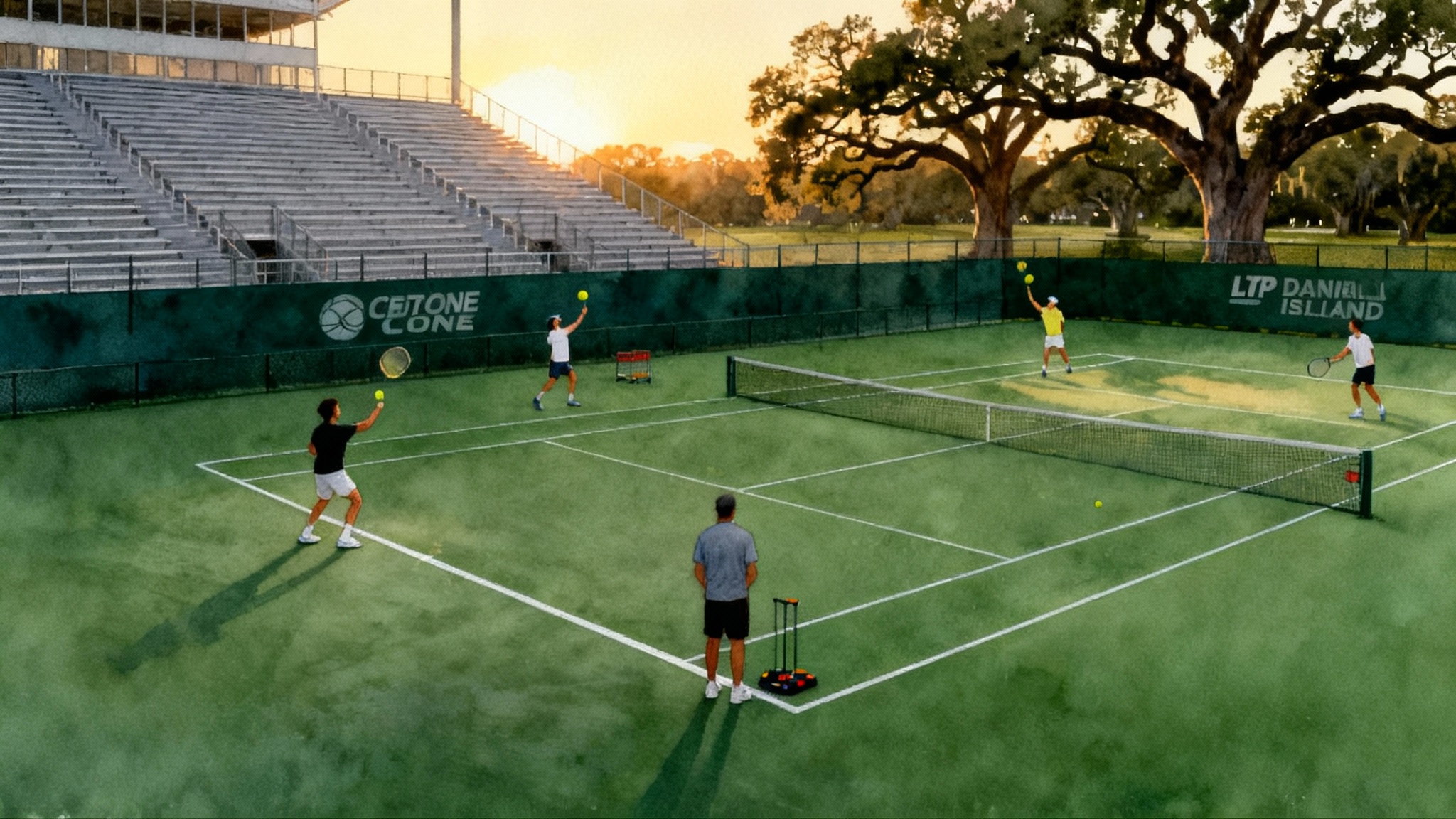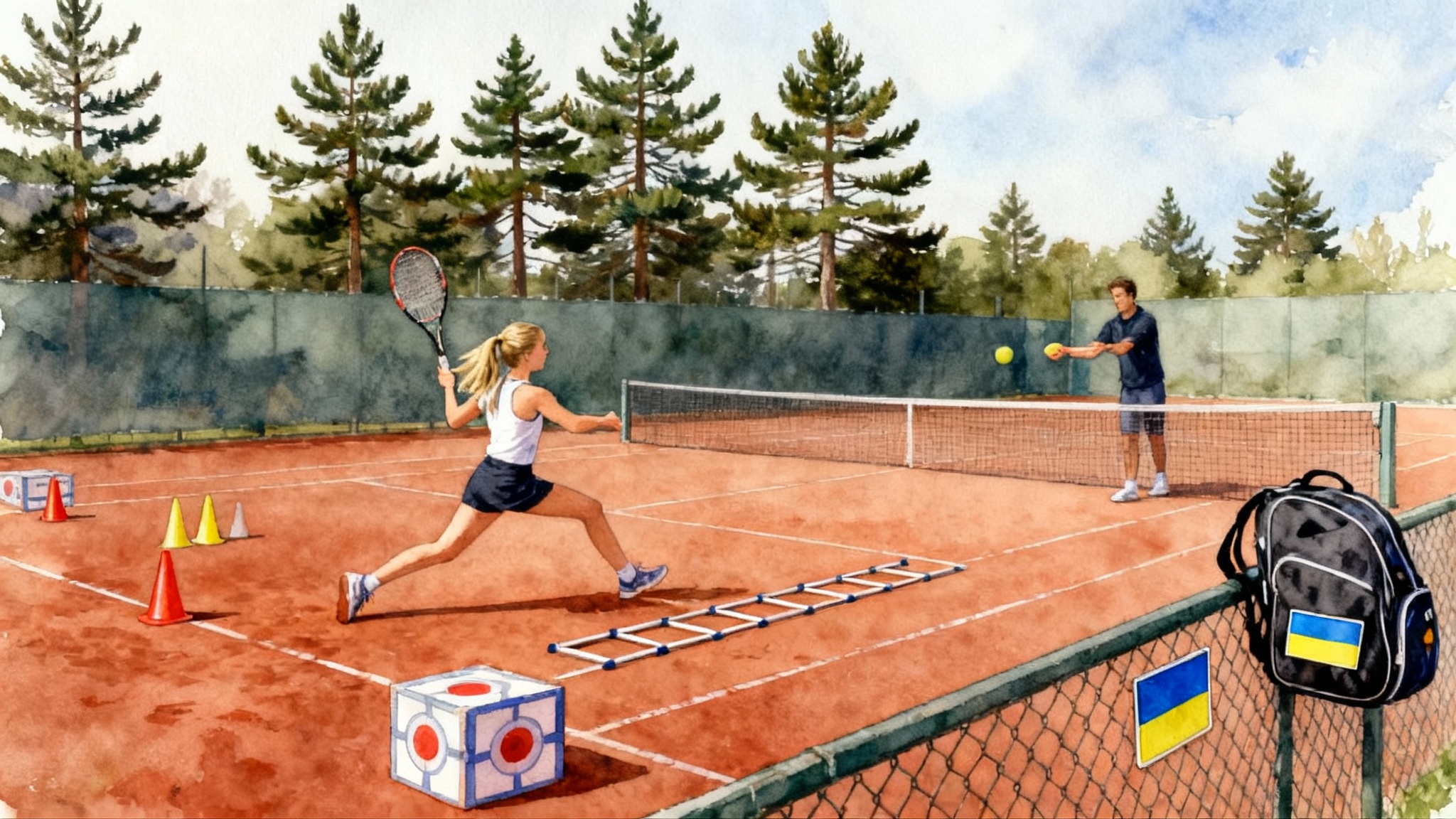From College Park to Center Court: JTCC and Frances Tiafoe
Frances Tiafoe’s rise began at the Junior Tennis Champions Center in College Park. Here is how community access, high-volume training, mentor coaching, and a smart shift to USTA support combined, plus a blueprint families can copy.
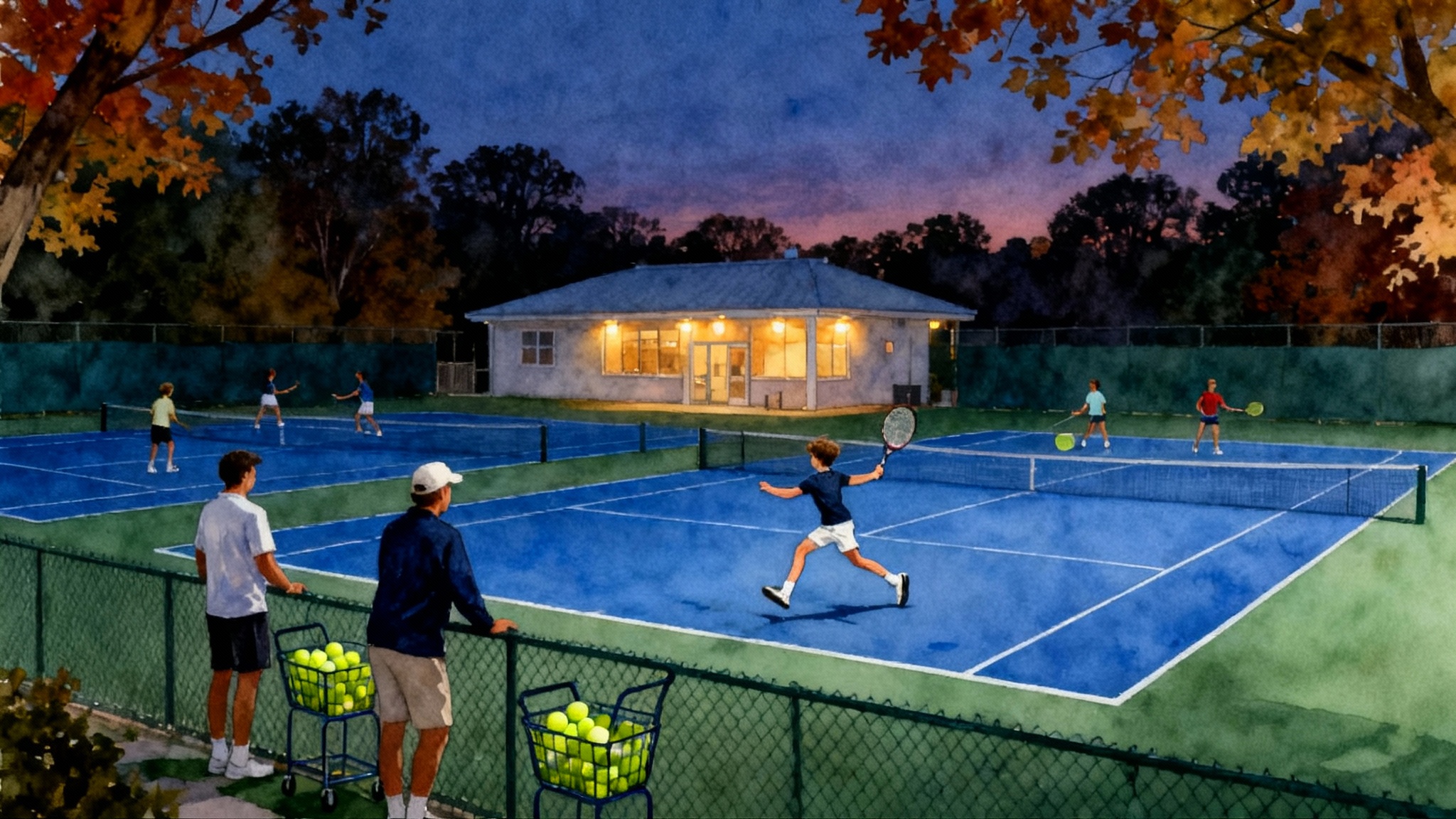
The kid with a key to the courts
Before Frances Tiafoe was a mainstay on the ATP Tour, he was the kid who practically lived at a community tennis center in College Park. The Junior Tennis Champions Center, known as JTCC, was not a castle on a hill. It was a hardworking hub where court time was a currency, coaches knew your story, and the lights stayed on long after homework was done. Tiafoe grew up inside that environment. The center felt more like a second home than a training facility, which lowered the psychological barrier to high effort. If you are a parent, that is the first lesson. Make the tennis place feel like a neighborhood gym where your child belongs, not a museum they tiptoe through.
What JTCC actually does differently
Plenty of academies promise great coaching and big dreams. JTCC’s method is specific and practical. Four ingredients kept showing up in Tiafoe’s path: community-rooted access, high-volume training with guardrails, mentor coaching relationships, and a well-timed handoff to national resources from the United States Tennis Association. Each piece can be recreated without moving your child into a boarding academy.
Community-rooted access
Access sounds simple, but it is powerful. Tiafoe could hit before school and after homework because the center was part of everyday life. Courts were close, the vibe was welcoming, and time on court was not rationed like a luxury good. That let him accumulate meaningful repetitions during the years when a player’s feel for the ball grows fastest.
You can copy this in three ways:
- Proximity over prestige: choose the closest good courts that your child enjoys visiting. A 15 minute drive repeated five times a week beats a glamorous facility reached once weekly.
- Habit windows: anchor tennis to routine moments. Before school for 30 minutes of serves. After dinner for 45 minutes of rally work. Small, repeatable windows add up.
- Community ties: trade volunteer hours or help with junior events in exchange for consistent court time. When you contribute, leaders are more willing to keep doors open. Programs that mix tennis with education show how this works in practice, as seen in the community-rooted NJTL pathway.
High-volume training that builds the engine
Volume created Tiafoe’s engine. At JTCC, the week was not an occasional private lesson, it was many hours of purposeful ball striking. Volume alone can overcook a young body, so the center used guardrails. Sessions were built around rally ball quality, serve buckets, and short burst speed rather than endless suicides. The goal was to hit a lot of balls while keeping tendons and enthusiasm healthy.
Borrow that structure:
- The 3-2-1 rule: three days of heavy hitting at 90 to 120 minutes, two days of targeted skills at 45 to 60 minutes, one day of match play. Rest completely one day.
- Rally quotas, not time quotas: for example 400 quality forehands and 250 backhands in a session. Stop when form slips two reps in a row. For clean mechanics you can layer in a focused progression like our 30-day forehand plan.
- Serve buckets with spacing: 60 first serves and 40 second serves broken into sets of 10, with footwork drills between sets to avoid shoulder overload.
Mentor coaching that sticks
At JTCC, coaching looked like a long runway, not a revolving door. A small circle of coaches became mentors who cared about schoolwork, mood, and growth, not just forehand grip. That continuity is what embeds footwork patterns and decision habits.
How to design this at home:
- Choose one lead coach for 70 percent of lessons, then add one or two specialists who can check in monthly. Specialists focus on specific pieces such as serve rhythm or two-shot patterns. For comparison, study how continuity drives outcomes in mentor coaching at Piatti Academy.
- Keep a shared notebook. Write down the week’s three cues. For example: load on outside leg, backhand finish high and across, defend crosscourt with height. Bring the same notes to each session.
- Finish each week with a 10 minute video review from a phone. One clip per cue is enough. Consistency beats production value.
The timed transition to national support
JTCC did not try to be everything forever. When Tiafoe needed higher level match play and broader resources, he integrated with the USTA Player Development pathway. National camps provided fresh opponents and professional standards, while his home base preserved comfort and identity. The blend prevented the two common traps: staying local too long or jumping into travel without a stable routine.
To time this step for your own player, use measurable triggers:
- Dominating your section: winning or making late rounds in most sectional events across three months.
- Match load capacity: competing in back to back weekends without a drop in movement quality or focus.
- Skill benchmarks: a top speed first serve that reliably crosses 105 miles per hour for boys or 95 for girls by mid-teens, plus a second serve with visible kick.
How the pieces combined to shape Tiafoe’s pro game
Watch Tiafoe at his best and you see the signature of his upbringing. His first step is explosive because he spent years sprinting for the next ball, not posing for pretty swings. His two shot patterns are simple and repeatable because he hit thousands of rally balls with targets. His court presence is relaxed because the court was home long before it became a stadium.
- Elastic defense to offense: early exposure to long rallies in a training group teaches a player to defend with height, then step in on the next short ball.
- Confident net looks: community training often includes doubles blocks where players learn to close and finish. Tiafoe’s comfort taking the ball early and moving forward reflects that environment.
- Serve as a tone setter: high volume buckets are boring, but they build a first serve that sets points on your terms and a second serve that protects scoreboards on bad days.
None of this required perfect conditions. It required a place that stayed open, a plan that paced the work, and adults who could mentor a teenager with patience.
A family playbook you can run without boarding
Below is a practical blueprint you can apply in any city without full-time boarding.
Build reliable access
- Negotiate a standing court slot at the same time each weekday for eight weeks. Consistency beats variety.
- Offer to assist with juniors or help resurface lines in exchange for a long block on a quiet court. Facilities remember helpers.
- Create a small hitting pod of three kids at similar levels and a reliable ball feeder adult. Rotate responsibilities for bringing balls, cones, and a camera phone.
Structure the weekly volume
- Monday and Thursday, heavy hitting: four ball patterns from the middle to both corners, then crosscourt to down the line live points.
- Tuesday, skill day: serves and returns only, plus 10 minutes of transition volleys off short feeds.
- Friday, situational play: start each point at 30 all, first to nine. Practice serving out games under pressure.
- Saturday, match day: one singles, one doubles. If opponents are scarce, play two sets of four ball live drills and a super tiebreak to 15.
Guardrails for safety
- Cap total serves at 120 per day under age 16. Use medicine ball throws and band work between sets to unload shoulders.
- Use a soft day after tournaments. That means 30 minutes of footwork ladders, 20 minutes of mini tennis, and 10 minutes of elastic band activation.
Build the mentor triangle
- Lead coach: owns progress on two priorities per month, such as neutral rally tolerance and second serve shape.
- Fitness mentor: once weekly 30 minute sessions focused on acceleration and deceleration, not bodybuilding.
- Parent as coordinator: keeps the shared notebook, schedules video reviews, and tracks sleep.
Plan the timed transition
- Set a date when you will test higher level play. Choose a month four months ahead, then work backward.
- In the eight weeks before that date, increase match play density. Two competitive sets on Wednesdays. Match day Saturdays. One tournament every other weekend.
- After the test month, evaluate on three axes: match wins, movement quality late in sets, and emotional bounce back within two points after an error.
Funding and travel tactics
- Cluster tournaments within a two hour drive and share hotel costs with another family. Plan Saturday morning starts to reduce school absences.
- Enter doubles at every event. It doubles reps on serve, return, and net movement for the same travel cost.
- Build a local sponsor circle. Offer to run a free kids clinic for a small business that covers entry fees for a season. Give them a framed team photo as a thank you.
A 10 week step by step plan
This plan copies the JTCC rhythm at a family scale. It balances volume and rest while building specific match tools.
- Week 1: Baseline assessment. Two sets of crosscourt consistency to 20 balls per rally. Serve radar check if available. Write three cues in the notebook.
- Week 2: Forehand pattern focus. Middle to forehand corner, recover, and defend back to middle. Add 100 kick second serves across the week.
- Week 3: Backhand density. Two crosscourt ladders to 15 balls each side. Finish with short ball approach and first volley.
- Week 4: Returns and depth. Mark a depth box three feet inside the baseline. Play return games to 15 where only balls landing in the box count.
- Week 5: First transition test. Play a practice match against an older opponent. Record two games from the ad side. Review serve plus one choices.
- Week 6: Serve placement. Three targets on the deuce side, two on the ad side. Score one point for hitting a target, minus one for a double fault. Set a weekly best to chase.
- Week 7: Pressure patterns. Every point starts at 30 all. Work on first serve percentage and depth on the next ball.
- Week 8: Tournament weekend. Singles and doubles. No technical changes mid event. Only tactical reminders from the notebook.
- Week 9: Recovery and rebuild. One light day, two skills days, one match play day. Add flexibility and ankle strength work.
- Week 10: Evaluation. Recheck serve speed or consistency, count unforced errors in a set, and compare to Week 1. Choose the next two monthly priorities.
What progress looks like month by month
Parents often ask for a scoreboard. Use these signs of real development rather than chasing ratings too soon.
- Rally tolerance: moving from seven ball average rallies to ten ball rallies in practice across a month.
- Serve protection: second serves that land deep enough to push returns above net height more than half the time.
- Pattern competence: the player can describe their two best patterns and two emergency patterns without prompting.
- Emotional reset: after a tough miss, the next two points show stable body language and a clear routine.
Common pitfalls and how to avoid them
- Too many voices: switching coaches every month resets habits. Protect the mentor triangle.
- Endless private lessons: players need match friction. Cap private time at 40 to 50 percent of total hours.
- Overtraining: more is not more if knees and mojo are fried. Watch for form breaking down and schedule a soft day.
- Travel for status: you do not need to fly to feel elite. Dominate local play first, then expand.
A note about results without hype
Tiafoe’s breakthrough results did not arrive overnight. They followed thousands of ordinary sessions. What looks like swagger on television is usually competence built through repetition. JTCC’s gift was not secrets. The center created space for work and surrounded it with mentors who believed maturity would come from the grind.
If you adopt the same ingredients, your child’s version will look different, but the engine will feel familiar. Court access that feels like home. Volume that builds without breaking. Mentors who teach the person, not only the player. A shift to bigger stages right when the foundation is ready.
Final takeaway for families
You do not need to live at a famous academy. You need a local center that welcomes you, a weekly plan that compounds small wins, and a mentor triangle that grows with your child. When the time comes, test bigger waters through a measured transition. The pathway is repeatable, because it is built on principles any community can supply.
